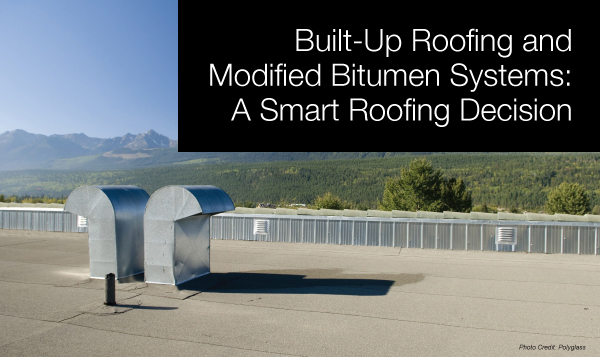
Reliability, endurance and sustainability are the top three reasons why low-slope, asphaltic roofing systems are America's most popular choice when it comes to protecting commercial, industrial and institutional buildings, according to the Asphalt Roofing Manufacturers Association (ARMA). Whether it is for new construction or for a re-roofing project, Built-Up roofing (BUR) and modified-bitumen (MB) systems possess these three qualities due to the multiple layers which comprise an asphalt system. In fact, when compared to single-ply systems, redundancy and density provide the key attributes that make BUR/asphalt roofs extremely puncture resistant and durable.
Let's review these attributes one at a time for a better understanding of what they mean to the performance of a roof.
Reliability Depends on Professional Installation
Reliability refers to a roof's immediate effectiveness after installation. In other words, how well will this roof be able to withstand extreme weather conditions from day one?
With built-up asphaltic roofing systems, reliability is achieved by the multiple layers that make up the system and the strong network of roofing experts who are well-versed at installing them. The systems are internally reinforced and fully adhered, creating a watertight barrier capable of providing years of reliable protection from the elements. When it comes to installation, a built-up roof is essentially "manufactured" by the crew hired to install it. The application of BUR systems is detailed work, which is why hiring a professional who pays particular attention to details such as curbs, walls, flashings or other projections that interrupt the membrane, will achieve a quality, efficient, long-lasting product for the building owner.
Furthermore, BUR systems are tested through Underwriters Laboratories and the Factory Mutual Research Corporation to meet strict fire resistance requirements and ensure adequate uplift resistance under extreme wind conditions.
Endurance and Ease of Maintenance Keep Reroofing Costs Down
A long lasting, high performance roof is a practical and financial necessity for any business owner. This is why a roof's endurance – determined by the amount of time it takes between installation and eventual replacement—is so important. When asked about high-performance systems, veteran roofing contractors will often boast about the age of some of the BUR systems they've installed, some in excess of 30 years plus. The redundancy, thickness and durability all play a role in their resistance to the elements. According to ARMA, when compared to other high performance commercial roofing systems, BUR and MB systems have proven to be some of the lowest cost roofs to maintain.
Surfacing can add to the protection of a BUR or MB roof as well. BUR roofing membranes can be protected from solar radiation by embedding gravel in the bitumen, applying a surface coating or applying a granular-surfaced "cap" sheet. Light-colored surfacing materials can be used to reflect heat from the building. In addition, surfacing agents can provide additional fire protection.
ARMA's list of things to
consider when choosing
a roofing system:
The architect, specifier, building owner and roofing contractor should examine the following parameters when choosing a roofing system:
- What is the building's type and usage?
- What building code requirements apply to the system?
- What is the estimated service life of the roof system? What type of maintenance will be required to maximize the service life of the roof system?
- What kind of roof deck will be used (type, size, slope)?
- How much is the roof deck expected to move relative to the roof perimeter? Shrinkage of the deck material? Moisture content of the deck?
- Access for equipment on the roof?


For more information about BUR or MB systems, please visit www.asphaltroofing.org.

Sustainability Results from BURs Long Lifecycle and
High Insulating Value
BUR and MB roofing systems, support sustainability by keeping materials out of landfills and increasing energy efficiency for building owners. With lifecycles of up to 30 years, asphaltic systems spend more time on rooftops and less time contributing to the nation's landfills. This long service life translates into a more sustainable future.
With regards to energy efficiency, ARMA advocates a "whole building envelope approach" for best results, but the roof is a large part of keeping energy usage to a minimum. ARMA also states that the layers used in BUR systems exhibit exceptional resistance to the conduction of heat between the exterior and interior of a building, resulting in noticeable reductions in heating and cooling costs.
The layers in a BUR system are effective in meeting today's energy codes but highly reflective surfacing also contributes to increased energy efficiency. With recent developments of more highly reflective surface materials, asphalt based products can now meet the Cool Roof Rating Council (CRRC) requirements for unaged and aged reflectivity. These highly reflective cap sheets provide superior protection from UV rays and the layers of asphalt support above average thermal emittance.
